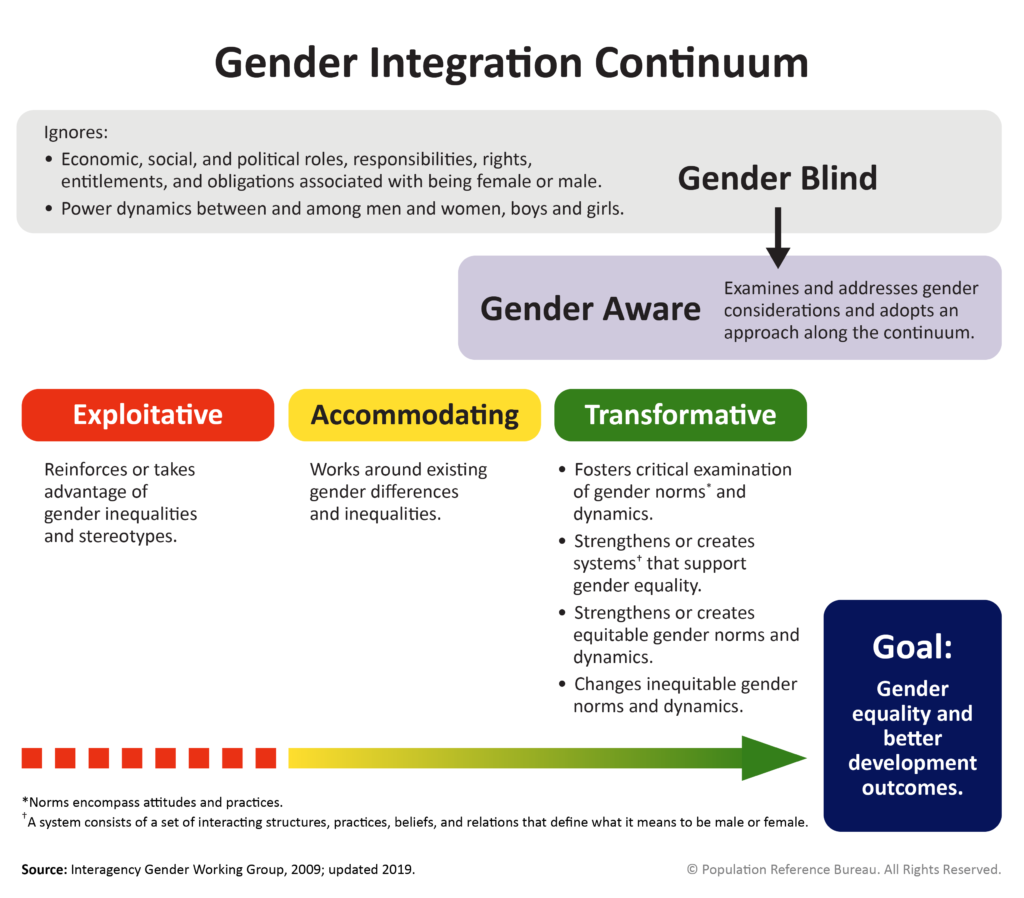Intimate Partner Violence and Family Planning
Developed for this 25th anniversary of the 16 Days of Activism against Gender-Based Violence campaign, this infographic explores the intersection of intimate partner violence and family planning.
Our training materials can be used to introduce a broad range of audiences and backgrounds to important concepts related to gender and health. Each training course focuses on one of five themes that complement the CORE Gender 101 agenda: Gender Integration, HIV + Sexuality, Safe Motherhood, Gender-Based Violence, and Constructive Male Engagement. The courses are designed to meet the geographic and technical needs of cooperating agencies, USAID Missions, and specific projects. Materials range from basics such as using a shared gender vocabulary and programmatic guidance, to user guides on how to conduct a gender analysis, to exercises for gender trainings. The trainings are geared to be used by anyone and with any audience, even those learning about gender for the first time!
Our popular Gender Integration Continuum framework is an important tool to assess how programs do (or do not) address gender and move them toward more gender-transformative actions. An updated User’s Guide for facilitating training on use of the continuum is available, along with other materials.
Developed for this 25th anniversary of the 16 Days of Activism against Gender-Based Violence campaign, this infographic explores the intersection of intimate partner violence and family planning.
This presentation provides an introduction and measurement frame work to school-related gender-based violence.
Studies in South Asia suggest child marriage is a strong risk factor for intimate partner violence (IPV), but evidence outside the region is lacking. This study looks at linkages between child marriage and IPV across 34 countries.
This brief presents data to help policymakers and others understand the nature and extent of the harm caused by IPV, especially as it relates to women’s reproductive health, family planning, and autonomy, and highlights opportunities for action.
This brief examines why health services should address gender-based violence and highlights examples of health programs that have incorporated effective responses to violence into their work.
This two-page brief succinctly answers the question “Why IS GBV Relevant to Reproductive Health?” Produced for the IGWG by Population Reference Bureau and funded by USAID, the brief outlines the sheer magnitude of GBV and its impacts on many reproductive health outcomes, including unintended pregnancy, maternal and child impacts, and STIs/HIV. It is a valuable resource in making the case quickly for policymakers everywhere.

